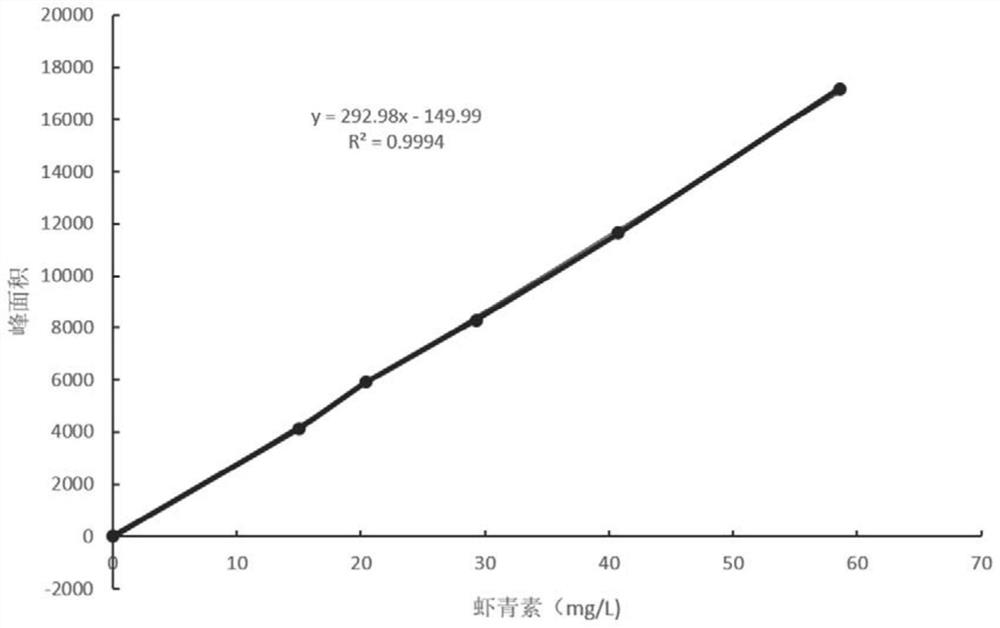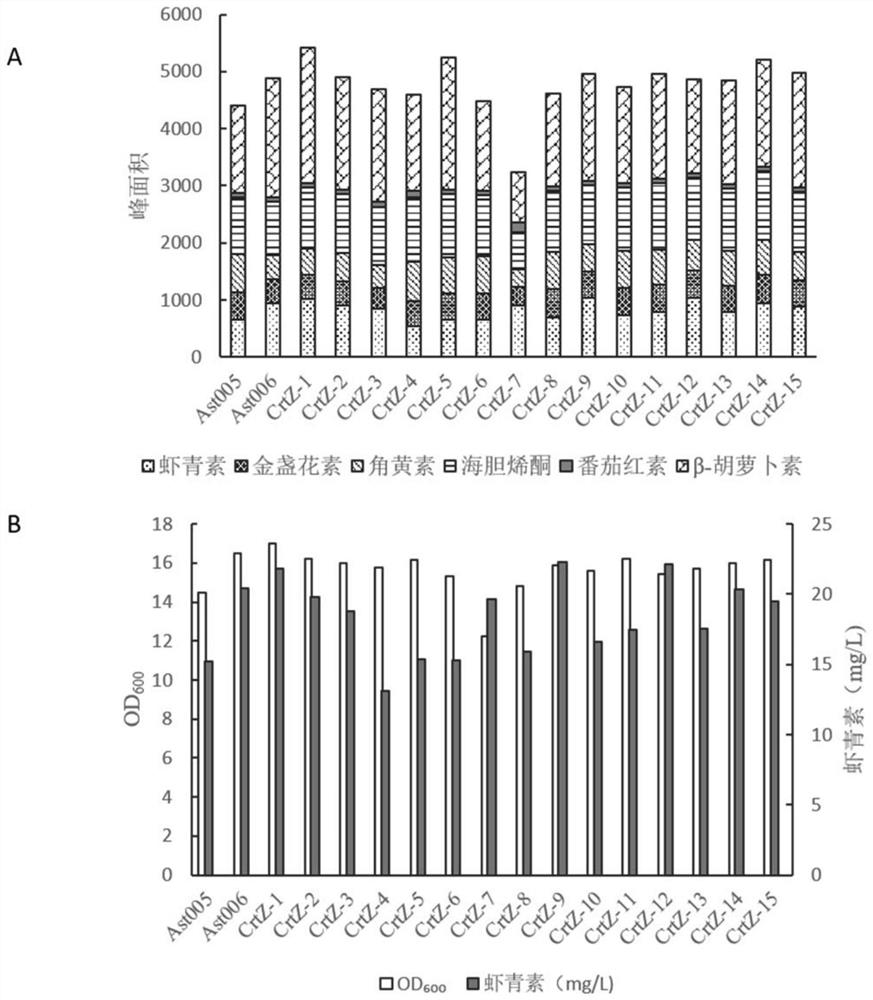Construction and Application of Astaxanthin Synthetic Strain
A technology of astaxanthin and recombinant bacteria, applied in bacteria, enzymes, isomerases, etc., can solve the problems that proteins cannot be folded correctly, limit the production of astaxanthin, and it is difficult to produce high yields, so as to eliminate the toxicity of metabolic intermediates, increase the Astaxanthin production, the effect of increasing the production capacity
- Summary
- Abstract
- Description
- Claims
- Application Information
AI Technical Summary
Problems solved by technology
Method used
Image
Examples
Embodiment 1
[0064] Embodiment 1, the construction of astaxanthin-producing bacterial strain ast005
[0065] (1) Construction of β-carotene-producing strain CAR026
[0066] Lycopene β-cyclase (CrtY, encoded by crtY) from Pantoea agglomerans can catalyze the synthesis of β-carotene from lycopene. In this example, the crtY gene was connected to the M1-93 promoter, and integrated into the pta site of the LYC102 strain by a two-step regulation method to construct a high-yielding β-carotene strain CAR026. Specific steps are as follows:
[0067] 1. Escherichia coli LYC102 with pKD46
[0068] The plasmid pKD46 was transformed into Escherichia coli LYC102 to obtain Escherichia coli LYC102 carrying pKD46.
[0069] 2. Construction of CAR026 strain by two-step homologous recombination
[0070] 1) Step 1 Homologous recombination construction of intermediate bacteria expressing cat-sacB
[0071] Using the pXZ-CS plasmid as a template, pta-cat-up and pta-cat-down as primers, PCR obtained about 3000...
Embodiment 2
[0129] Embodiment 2, the construction of producing astaxanthin bacterial strain
[0130] A second copy of the crtZ gene was added to the astaxanthin-producing recombinant strain Ast005 prepared in Example 1 to reduce the accumulation of canthaxanthin and β-carotene and increase the synthesis of astaxanthin.
[0131] 1. Astaxanthin-producing Ast006 and the acquisition of library strains
[0132] 1. One-step homologous recombination method to add a second copy of the crtZ gene
[0133] The pKD46 plasmid was transformed into Escherichia coli ast005 prepared in Example 1 to obtain Escherichia coli Ast005 carrying pKD46.
[0134] Using pflB-up-FRT / M1P-R as primers and using the genome of the recombinant strain M1-93 as a template, amplify about 1600bp DNA fragment I;
[0135] Using crtZ-M1-F / pflB-crtZ-R as primers, using Pantoea agglomerans (Pantoea agglomerans, purchased from the Institute of Microbiology, Chinese Academy of Sciences, product number: 1.2244 genomic DNA as a temp...
Embodiment 3
[0154] Example 3, Construction of astaxanthin-producing strains expressing molecular chaperone genes
[0155] 1. Molecular chaperone gene regulation increases astaxanthin production
[0156] The two-step homologous recombination regulates the molecular chaperone genes groES and groEL in Ast007; the molecular chaperones GroES and GroEL can help foreign proteins to fold correctly. Because the two genes are under the same operon, use the method of two-step homologous recombination to replace the groES-groEL gene (sequence 14, wherein the 1-294bp is the groES sequence, The 338-1984bp is the groEL sequence, and the 294-337bp sequence is the sequence between the two genes) the front part of the operon (the front part of the gene) to achieve the purpose of regulating the molecular chaperone genes groES and groEL, and improve the activity of CrtZ and CrtW (through Increase the correct folding of CrtZ and CrtW proteins, increase the amount of active proteins, thereby increasing protei...
PUM
 Login to View More
Login to View More Abstract
Description
Claims
Application Information
 Login to View More
Login to View More - R&D
- Intellectual Property
- Life Sciences
- Materials
- Tech Scout
- Unparalleled Data Quality
- Higher Quality Content
- 60% Fewer Hallucinations
Browse by: Latest US Patents, China's latest patents, Technical Efficacy Thesaurus, Application Domain, Technology Topic, Popular Technical Reports.
© 2025 PatSnap. All rights reserved.Legal|Privacy policy|Modern Slavery Act Transparency Statement|Sitemap|About US| Contact US: help@patsnap.com



